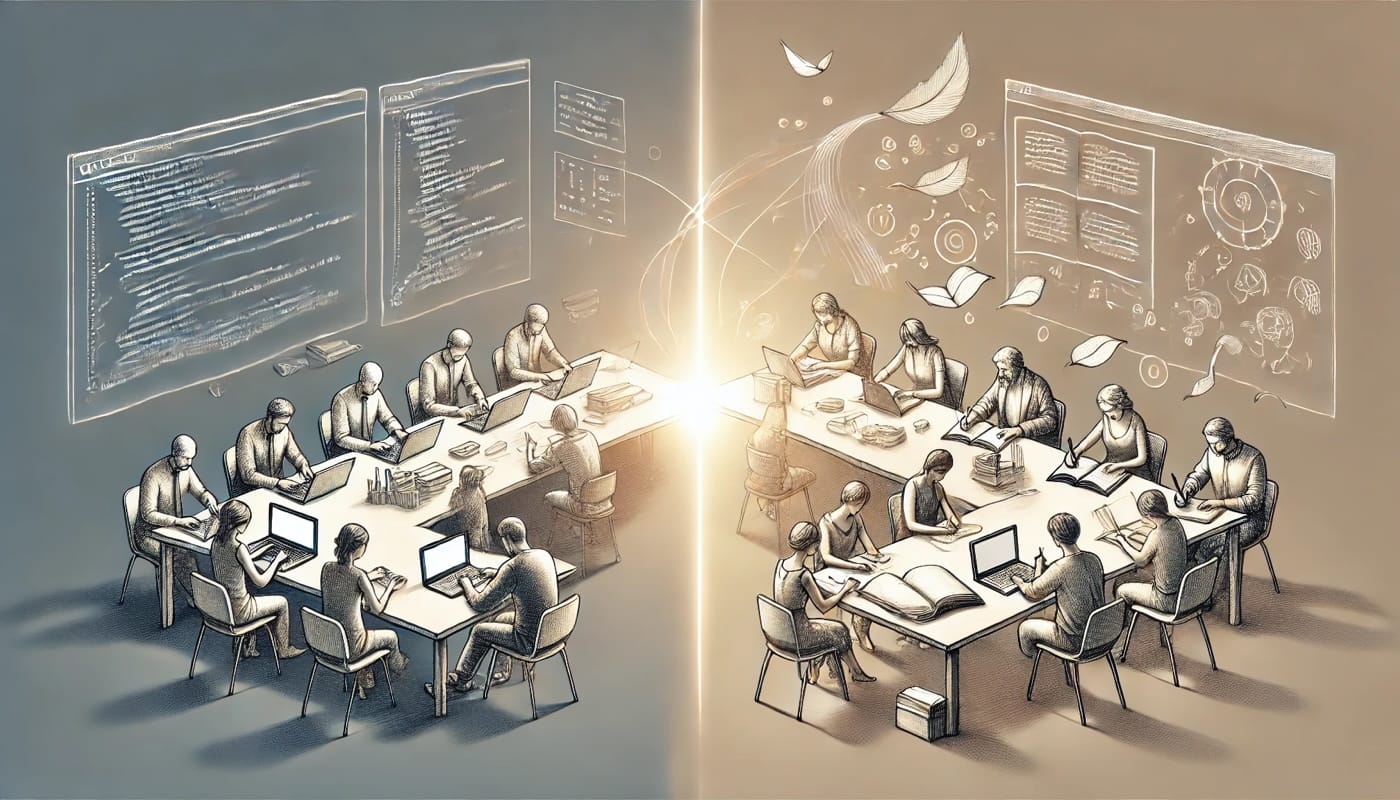Programming is Writing: How Software Development Resembles Creating a Novel as a Team

As a CTO with over 25 years in the technology industry, I've often grappled with a persistent challenge: conveying the intricate complexities of software development to non-technical professionals. Despite the ubiquity of software in our daily lives, its creation remains a mysterious black box to many. The key to bridging this understanding gap lies in finding the right metaphors. Yet, not all metaphors are created equal—some can even be misleading.
The Pitfalls of Construction Metaphors
A common analogy compares software development to constructing physical infrastructure, like building a house or a bridge. At first glance, this seems apt—both require planning, design, and teamwork. However, this metaphor oversimplifies the dynamic and creative nature of software development.
In construction, once the blueprints are finalized, workers (often seen as cogs in a machine) execute predetermined tasks. For example, when building a bridge, the environment is relatively predictable—a river's course remains stable enough to plan around, and a foundation stays where it is laid. In contrast, software development is a fluid process. Customer needs evolve, market conditions shift, and technological advancements emerge rapidly. Every line of code is a creative decision, requiring not just execution but also critical thinking and problem-solving.
Unlike construction workers following a fixed plan, developers must constantly adapt to new information and pivot strategies.
Moreover, treating developers as mere executors undervalues their expertise and can lead to disengagement. Unlike construction workers following a fixed plan, developers must constantly adapt to new information and pivot strategies. The construction metaphor fails to capture this agility and creativity, potentially doing more harm than good in understanding software development.
A Better Metaphor: Writing a Novel with Multiple Authors
To more accurately depict the complexities of software development, I propose a different metaphor: writing a novel collaboratively with multiple authors. Imagine orchestrating a literary masterpiece like Moby-Dick, which spans approximately 600 to 720 pages and contains around 1.2 million characters. Now, consider scaling this up to the size of the Linux kernel, which boasts about 30 million lines of code or roughly 1.5 billion characters.

The Complexity of Coordination
Writing such an extensive novel with a team of ten authors requires meticulous coordination. Each writer must ensure their chapters align with the overarching narrative, maintain consistent character development, and preserve the story's tone and style. A change in one chapter can ripple through the entire plot, necessitating adjustments elsewhere.
Similarly, in software development, programmers work on different modules that must integrate seamlessly. A modification in one part of the codebase can have unintended consequences in another, especially if not communicated effectively. New developers joining the project face the daunting task of understanding the existing code's intricacies before contributing meaningfully—much like a new author needing to grasp the full scope of the novel before penning a chapter.
Technical Debt as Literary Inconsistency
Technical debt in software is akin to inconsistencies and poor writing in a novel. If authors leave midway and new ones join with different visions, the story can become disjointed. Plot holes may emerge, characters might behave inconsistently, and the overall quality can suffer. This makes introducing new elements—like a character or subplot—more challenging, as it requires reconciling past inconsistencies.
In software terms, technical debt accumulates when quick fixes or suboptimal code solutions are implemented to meet short-term goals. Over time, this "debt" makes it harder to add new features or maintain the software, just as a poorly written novel becomes harder to edit or expand.
The Artistry of Code
At its core, writing software is an art form. It's not just about instructing computers but also about crafting code that other humans can understand, maintain, and build upon. Good code, like good literature, should be clear, coherent, and elegant. It requires creativity, foresight, and empathy for future readers—be they fellow developers or end-users.
Embracing the Metaphor for Better Collaboration
Understanding software development through the lens of collaborative novel writing can foster better communication between technical and non-technical stakeholders. It highlights the necessity of:
- Collaboration and Communication: Just as authors must stay aligned, developers need open channels of communication to ensure cohesion.
- Flexibility and Adaptability: Stories can take unexpected turns, and so can software projects. Being adaptable is crucial.
- Quality Over Quantity: Rushing through pages or code can lead to poor quality, requiring extensive revisions later.
- Understanding the Bigger Picture: Every line of code or paragraph written contributes to the final product. A holistic understanding ensures each part serves the whole.
Conclusion
Software development is a complex, creative endeavor that parallels the collaborative effort of writing a novel with multiple authors. Recognizing this can help demystify the process for non-technical professionals and emphasize the artistry involved in coding. By adopting more accurate metaphors, we can bridge the gap between different disciplines, foster better collaboration, and ultimately create better software.
In the end, writing code isn't just about communicating with machines; it's about telling a story that humans can understand and evolve. It's about crafting a narrative that stands the test of time, adapts to new chapters, and resonates with its readers. Writing code is, indeed, an art.
No spam, no sharing to third party. Only you and me.






Member discussion